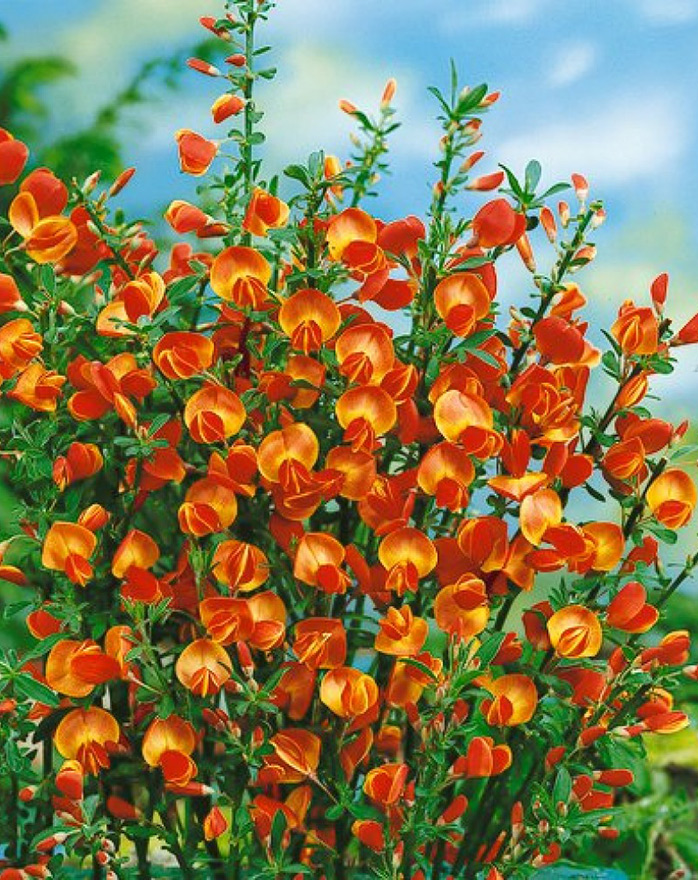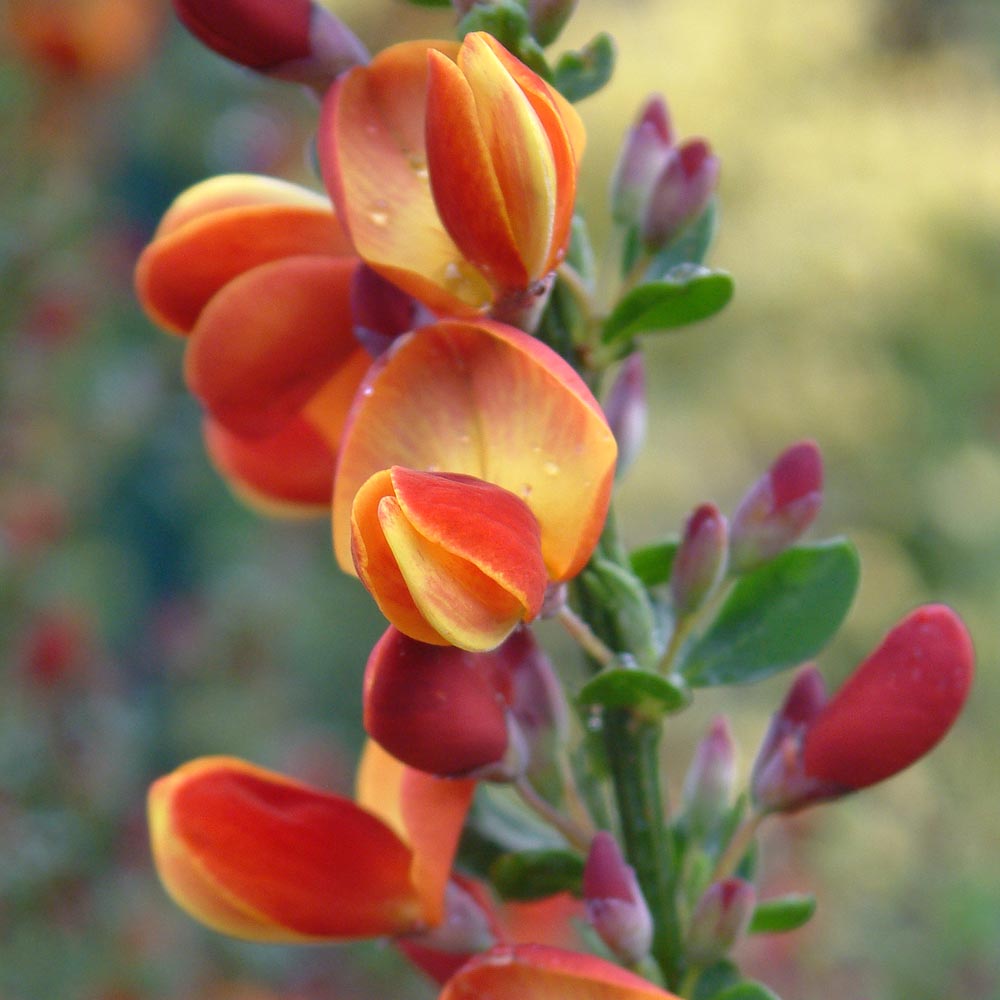Cytisus Lena: The Evergreen Shrub That Will Bloom For Years To Come
Title: Cytisus Lena: The Evergreen Shrub That Will Bloom for Years to Come
Introduction:
Cytisus Lena is an evergreen shrub that is known for its beautiful, bright yellow flowers. It is a relatively low-maintenance plant that can thrive in a variety of conditions, making it a popular choice for gardeners of all levels of experience.
In this blog post, we will take a closer look at Cytisus Lena. We will discuss its growth habits, care requirements, and potential uses in the landscape. We will also provide some tips for planting and maintaining this beautiful shrub.
Main Content:
Growth Habits
Cytisus Lena is a compact, spreading shrub that typically grows to be 3-4 feet tall and wide. It has a dense, upright habit and slender, arching branches. The leaves are small and oval-shaped, and they are a dark green color.
Care Requirements
Cytisus Lena is a relatively easy-care plant. It prefers full sun and well-drained soil. It is drought-tolerant once established, but it will benefit from occasional watering during the summer months. Cytisus Lena is not as cold-hardy as some other evergreen shrubs, but it can tolerate temperatures down to -15 degrees Fahrenheit.
Pests and Diseases
Cytisus Lena is generally resistant to pests and diseases. However, it may be susceptible to scale insects and powdery mildew. If you notice any pests or diseases on your plant, it is important to treat them promptly.
Potential Uses in the Landscape
Cytisus Lena is a versatile shrub that can be used in a variety of landscape settings. It is a good choice for borders, rock gardens, and sunny patios. It can also be used as a hedge or screen.
Planting and Care
Cytisus Lena can be planted in the spring or fall. When planting, choose a location that receives full sun and has well-drained soil. Amend the soil with compost or other organic matter to improve drainage.
Water your new plant regularly until it is established. Once established, Cytisus Lena is drought-tolerant and only needs to be watered during periods of extreme drought.
Fertilize your Cytisus Lena plant in the spring with a balanced fertilizer. You can also apply a layer of mulch around the plant to help retain moisture and suppress weeds.
Conclusion
Cytisus Lena is a beautiful and low-maintenance shrub that is sure to add a touch of color to your landscape. With its bright yellow flowers and evergreen foliage, Cytisus Lena is a versatile plant that can be used in a variety of settings. If you are looking for an easy-care shrub that will bloom for years to come, Cytisus Lena is a great choice.
If you are interested in learning more about cytisus lena, I recommend visiting the website Home Gardening. This website has a wealth of information about this plant, including its history, uses, and cultivation. You can also find photos and videos of cytisus lena, as well as a forum where you can ask questions and connect with other cytisus enthusiasts.
FAQ of cytisus lena
- Is Cytisus Lena evergreen?
No, Cytisus Lena is not evergreen. It is a deciduous shrub that loses its leaves in the fall and winter. However, it does regrow its leaves in the spring.
- What are the uses of Cytisus Lena?
Cytisus Lena can be used for a variety of purposes. It is often grown as an ornamental shrub, due to its attractive flowers and foliage. It can also be used as a hedge plant, as it can grow to be quite tall. The branches of Cytisus Lena can also be used to make baskets, brushes, and brooms.
- How to care for Cytisus Lena?
Cytisus Lena is a relatively easy plant to care for. It prefers full sun and well-drained soil. It is drought-tolerant, but it will benefit from regular watering during the hot summer months. Cytisus Lena is not very susceptible to pests or diseases. However, it may be susceptible to powdery mildew if it is planted in humid conditions.
- What are the common problems with Cytisus Lena?
The most common problem with Cytisus Lena is powdery mildew. Powdery mildew is a fungal disease that causes white, powdery patches to form on the leaves of the plant. It can be treated with a fungicide. Other potential problems with Cytisus Lena include:
* Root rot: This can occur if the plant is planted in wet soil. It can be prevented by planting the plant in well-drained soil.
* Aphids: These small insects can suck the sap from the leaves of the plant, causing them to wilt and yellow. They can be controlled with insecticidal soap or neem oil.
* Scale insects: These small, round insects can attach themselves to the stems and leaves of the plant, causing them to discolor and deform. They can be controlled with insecticidal soap or neem oil.
- How to propagate Cytisus Lena?
Cytisus Lena can be propagated by seed or by cuttings. To propagate by seed, sow the seeds in the spring in a well-drained potting mix. Keep the potting mix moist but not soggy. The seeds will germinate in 2-4 weeks. To propagate by cuttings, take cuttings from the plant in the spring or summer. The cuttings should be about 4-6 inches long and have at least 3 leaves. Plant the cuttings in a well-drained potting mix and keep them moist. The cuttings will root in 2-4 weeks.
Image of cytisus lena
10 different images of cytisus lena that are free to use:
- Cytisus Lena in full bloom. The flowers are a bright yellow color and are arranged in clusters. The plant has a bushy growth habit and can reach a height of up to 3 feet.
- Close-up of cytisus lena flowers. The individual flowers are small, but they are very numerous. The petals are narrow and slightly curved.
- Cytisus Lena in a garden setting. The plant is surrounded by other flowering plants, such as lavender and roses. The yellow flowers of the cytisus lena stand out against the green foliage of the other plants.

- Cytisus Lena in a pot. The plant can be grown in a pot, but it will need to be repotted every few years as it grows. The pot should be at least 12 inches in diameter and have drainage holes in the bottom.

- Cytisus Lena in the wild. The plant is native to the Mediterranean region, but it can be found growing in other parts of the world, such as North America and Australia. It is often found growing in dry, sandy soil.
- Cytisus Lena in winter. The plant loses its leaves in winter, but the stems remain green. The plant will start to grow new leaves in the spring.

- Cytisus Lena as a hedge. The plant can be used to create a hedge. It is a fast-growing plant and can be trimmed to the desired shape.

- Cytisus Lena as a groundcover. The plant can also be used as a groundcover. It is a low-maintenance plant and can tolerate foot traffic.

- Cytisus Lena in a bouquet. The flowers of the cytisus lena can be used in bouquets. They are long-lasting and add a touch of brightness to any arrangement.

- Cytisus Lena as a gift. The plant can be given as a gift to someone who loves flowers. It is a relatively inexpensive plant and is sure to bring joy to the recipient.



Post a Comment for "Cytisus Lena: The Evergreen Shrub That Will Bloom For Years To Come"